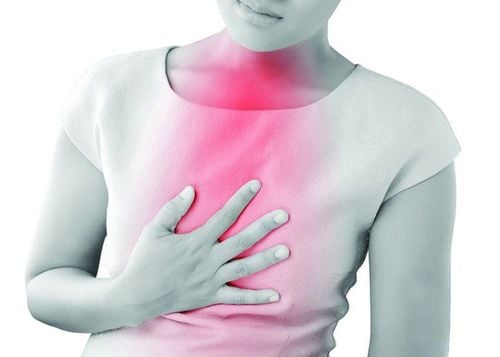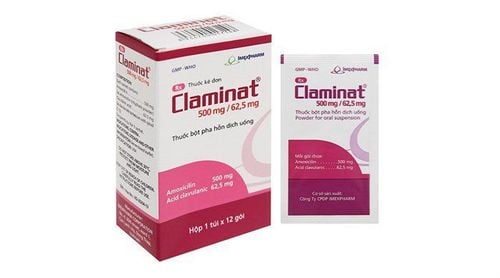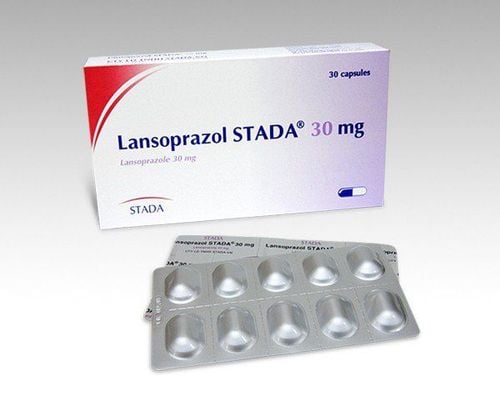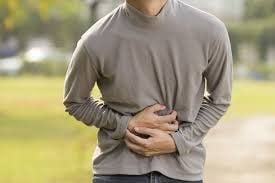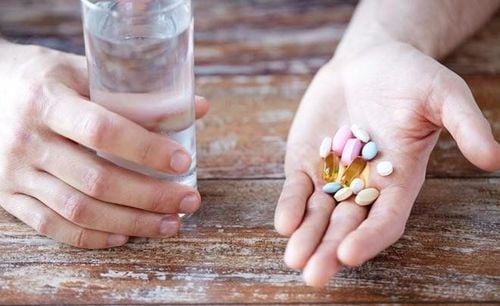This is an automatically translated article.
Esophageal stricture is a rather dangerous disease, causing not less discomfort but also reducing the quality of life of the patient. In patients with esophageal stricture, there are not only gastrointestinal symptoms, but also negative respiratory effects, including dyspnea.
1. What is esophageal stricture?
The esophagus is part of the digestive tract, the passage between the mouth and the stomach. Anatomically, the length of the esophagus is usually about 25cm and is divided into 3 segments: the neck, the thorax and the abdomen, in which the thorax is the longest with about 20cm.
The esophageal tube has 3 natural narrowing places:
At the level of the cricoid cartilage, where it connects with the pharynx. At the crossroads of the left main bronchus and the aortic arch. Cardiac orifice - where the esophagus empties into the stomach. Esophageal stricture is a condition when a portion of the esophagus is narrowed due to injury, resulting in obstruction of the circulation and transport of food from the mouth to the stomach. Patients with esophageal stricture will have symptoms of difficulty swallowing, leading to poor appetite, even exhaustion. It also affects the respiratory tract causing difficulty breathing.
2. Causes of esophageal stricture
Esophageal stricture can be caused by benign or malignant causes.
Benign causes of esophageal stricture are usually due to damage by diseases or interventions in the esophagus, typically:
Congenital esophageal stricture: During pregnancy, the esophagus narrows. , the specific cause is still unknown. The disease usually occurs when the fetus is 4 weeks old. Gastroesophageal reflux disease (GERD): This is one of the most common causes. In these patients, acid from the stomach will back up into the esophagus, causing irritation and damage, leading to inflammation of the esophageal wall, causing narrowing of the esophageal lumen. Swallowing chemicals or being exposed to radiation burns the esophagus. Using a nasogastric tube for a long time or while inserting the tube can cause ulceration of the esophageal mucosa. The disease is common in patients who cannot eat or drink on their own, such as those in a coma or total paralysis. Treatment of esophageal varices when the esophagus has varicose veins that are dilated in some cases, which can cause scarring leading to esophageal stricture. Gastrointestinal procedures: During endoscopic procedures, the esophagus can be damaged. Tumors in the esophagus are of a benign nature. The esophagus is narrowed due to compression by adjacent benign tumors. Esophageal stricture due to malignant causes such as:
Esophageal cancer. Cancer of nearby organs puts pressure on the esophagus.
3. Symptoms of esophageal stricture
Patients with esophageal stricture may experience symptoms related to both gastrointestinal and respiratory tract such as:
Swallowing pain, difficulty swallowing, choking: This is an almost confirmed symptom in people with esophageal stricture. . Initially, this symptom may only be experienced when eating solid foods, but later both liquid food or swallowing water can be experienced. The severity of symptoms depends on the narrowing of the esophageal lumen. Food gets stuck in the mouth or behind the breastbone because it can't get to the stomach, causing discomfort and tightness. It even causes pain behind the sternum. Vomiting: Due to food stasis in the esophagus, it stimulates the esophagus to expand and cause reverse peristalsis to expel food to reduce pressure in the esophagus. Heartburn, belching, hiccups: are one of the common symptoms. Weight loss, lack of water, even malnutrition due to not being able to eat or drink anything. Cough or difficulty breathing.
4. Be wary of breathing difficulty in people with esophageal stricture
Usually, when we have difficulty breathing, we often think it is caused by problems in the respiratory tract, but this is also one of the common symptoms in people with narrowing of the esophagus. Esophageal stenosis causing difficulty breathing often originates from the cause of gastroesophageal reflux, which increases the amount of acid in the esophagus, not only causing damage to the esophageal mucosa but also affecting the airways.
Mechanisms leading to dyspnea due to stricture include:
First, the esophageal mucosa is irritated due to the large amount of acid in the gastric juice being refluxed into the esophagus. Because the esophagus and trachea - the body's air duct are close to each other, when the esophagus is irritated, it will create a pressure on the trachea, causing the patient to begin to feel short of breath; Second, narrowing of the esophagus prevents food from entering the stomach. When the amount of food is large enough, it will back up into the nasopharynx. This is the junction connecting the esophagus and bronchi, when the nasopharynx is blocked by reflux of food, it also blocks the passage when it causes difficulty breathing, chest tightness. This condition is especially frequent when the patient is lying down or during sleep. Third, stomach acid, when food is refluxed, not only causes blockage but also inflammation of the esophagus. The inflamed lining of the esophagus will stimulate the muscles in the chest, causing reflexes to contract, compressing the airways, leading to difficulty breathing; Finally, in patients with esophageal stricture, aspiration pneumonia can occur due to stomach acid or food from the esophagus spilling into the airways down to the lungs. At that time, the entire airways and lungs are inflamed, swollen, and increased secretion of fluid causes narrowing of the airways and reduced ventilation, thereby making it difficult for the patient to breathe. Some cases of severe aspiration pneumonia cause sudden shortness of breath or completely obstruct breathing, if not treated promptly, can lead to death.
5. How to treat esophageal stricture?
Depending on the cause and degree of narrowing of the esophagus to choose or combine treatment methods, including changing diet, living, using drugs or intervention procedures.
Adjust diet and activities accordingly:
Limit foods that often cause gastroesophageal reflux such as spicy foods, grease, stimulants, tobacco, caffeine, chocolate, .. Eat science, not to be overweight. Wear comfortable clothes, especially after eating to reduce pressure on your stomach. Eat small meals throughout the day, do not eat too much at one time. Limit lying down or vigorous exercise within 3 hours after eating Drug therapy:
Proton pump inhibitors - drugs that antacid the stomach by inhibiting H+ transport channels: Not only reduce stomach acid but also reduce stomach acid. It also treats GERD and limits the possibility of esophageal stricture in the future. Antibiotics: Treatment in cases of esophagitis causing stricture caused by an infection of the esophagus. Procedural interventions: Esophageal dilation, esophageal stenting, or esophagectomy may be considered in severe esophageal strictures, when other methods have failed.
In summary, esophageal stricture is quite dangerous disease, caused by many causes and easy to recur. To actively prevent disease, people need to have a healthy lifestyle, exercise regularly, eat properly and limit procedures in the esophagus. When detecting abnormal symptoms of the digestive tract, it is necessary to go to the doctor early to detect the disease and treat it promptly.
Please dial HOTLINE for more information or register for an appointment HERE. Download MyVinmec app to make appointments faster and to manage your bookings easily.




